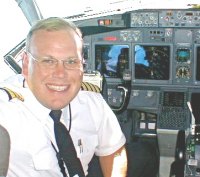This Forum is a place for Piper Comanche pilots to communicate and discuss technical issues
If you join or reset a password, please check your Spam Email box for emails from Admin at ComancheTechTalk.com
Please put your questions on the forum as well so everyone can read and respond. Someone else might be having similar questions.
All questions or topics on the Forums automatically get sent to the Tech team as well.
Low fuel pressure, PA24-250

Tom Deml- Posts: 20
- Joined: Sat Feb 18, 2012 5:00 am
Re: Low fuel pressure, PA24-250
Now about the pump plumbing....Look at the parts manual page 2H11, ( and 2H7 though a 180 with single electric pump it shows the routing of the hoses more clearly), it is obvious that the supply side of the engine driven pump is not the pressure side of the electric pump, but in fact shares a common supply from the firewall fitting. The pressure side of the electric pumps join with the pressure side of the engine driven pump prior to the carb. The fact that the engine driven pump operates at a slightly lower pressure than the EDP causes a stagnation of fuel in the EDP when the electrics are running, and has led to vapor lock in hot weather that was found when the electric pumps were turned off after takeoff and the pressure wasn't monitored. Solution is to turn on the electric pumps just long enough for pressure recovery and then off, and allowing the vapor to work through the system until the EDP pics up the full flow. Thats the bad part. The good part is that when the diaphram comes apart in the EDP and plugs the fuel flow, the electric pumps can still supply full fuel flow to the engine to get you safely to an airport instead of whatever you are over at the time of the failure!
-Zach

Zach Grant L1011jock- Technical Advisor
- Posts: 1404
- Joined: Mon Mar 22, 2004 4:35 pm
- Location: Indianapolis KEYE
Re: Low fuel pressure, PA24-250
We have a 61 250 with the identical engine an 0540A1D5. Ours has 1850 hours on it. We have owned it since 2000, overhauled in 97. I too had the same concerns when I first started flying it because on take off the fuel pressure was very low on the factory guage, perhaps .5-1 psi. Once manifold pressure is reduces then pressure increases. We do have a JPI 450 fuel flow as well. On take off at sea level we see app 24 or so gph at full throttle. This goes with the rule of thumb that take off FLOW should be about 10% of horsepower. here then is what I learned. Please keep in mind I am not an a&p, but am very active in the maintenence of our aircraft and have a mechanical background.
The 0540 only needs a min of .5 psi at full throttle. At full throttle you will have a high flow but low pressure as really there is no restriction to the amount of fuel to the carb. Think an open garden hose. Once you reduce throttle you decrease flow but increase pressure, think pinching the garden hose. This is very simplified, but remember, if you are getting at least .5 psi at full throttle you in an acceptable range..
More importantly has the reading changed from what you saw on the old engine? Yours sounds like it's operating just like ours. I hope this helps
If you don't mind could you tell us your experiences with the overhaul? I'm getting close and like all the knowledge I can get.
Andrew
- Andrew Foster
- ICS member

- Posts: 161
- Joined: Fri Dec 31, 2004 9:22 pm
Re: Low fuel pressure, PA24-250
We have verified it is not the gauge. They installed their own gauge and it mirrored the panel fuel pressure gauge.

Tom Deml- Posts: 20
- Joined: Sat Feb 18, 2012 5:00 am
Re: Low fuel pressure, PA24-250
One other issue that seems to have come along with this whole fuel pressure issue is the engine seems to want to stumble or hesitate a bit, particularly when it is not up to full operating temperature, when you transition from the idle circuit to run circuit. That range of 900 to 1200 rpms. My mechanic made some adjustment(s) on the carb and its better but not gone. if you pull the carb heat and then power thru that range, its gone. my mechanic has a suspicion that something else is not quite right because he said he's never had to adjust further than what he had to do on mine. so whether the low fuel pressure issue and this hesitation are related or not we have not determined. bottomline, before the overhaul, none of these issues existed. so, some thing or things are not right.
Andrew, maybe in the end, you are right and things are normal. I'm not comfortable though at this point when the needle is nearly on zero. I do not have a fuel flow gauge. as mentioned above, my fuel pressure always lived in the happy middle of the green prior to overhaul. so something has changed. hopefully we are not chasing a fake gremlin.
Andrew as for my overhaul, see a former post of mine under Engine Breather Tube. The conclusion to my overhaul was a very good outcome overall. I did have to replace my crankshaft which cost me an additional $8000 for an overhauled one with the full flange and could be ground again. My original didn't pass muster due to grooving in one or two journals and some heat cracking. it was caused by the old style rods that had been installed on the previous overhaul apparently. those rods had a narrower face and wore the journal. So when I got all done for my entire firewall forward including my prop I spent $48,000. About $10,000 more than I had hoped to spend , but I have confidence in everything up front.....except the fuel at the moment.....but it's fixable I'm sure.

Tom Deml- Posts: 20
- Joined: Sat Feb 18, 2012 5:00 am
Re: Low fuel pressure, PA24-250
Other Lycoming setups have a more sensitive large face round pressure activated gauge. Fuel line right into the cockpit - like a Lake LA-4. The fuel pressure gauge is a sensitive pressure type that was directly connected to the fuel. That needle flew all over the place. If the carburetor bowl was full the pressure was very high and when the needle valve opened to call for fuel the pressure dropped right off down to 1 psi and then bounced right back up to 8 psi when the needle closed. During cruise flight the pressure flopped back and forth between 3 and 10 psi. These pressure fluctuations are normal and due to the way the plunger style diaphragm pump works.
But the resistive type automotive gauges smooth all of that out and provide a sort of average reading. Do you have the original resistive gauge or has it been replaced with something more sensitive? An electronic engine monitor maybe?
Also, if there is air or vapor bubbles in the fuel it will still indicate the pressure properly. The bubbles are at the same pressure as the fuel they are in. Makes no difference to the gauge. Bubbles in the line may indicate that there is a restriction and leak somewhere upstream of the pump pulling air in (which is bad) but the pressure is the pressure whether there are bubbles in the fuel or not.
Fuel injected is different - but we are talking carburetors here, as I recall.

William Hughes- Posts: 97
- Joined: Mon Apr 21, 2014 9:23 pm
- Location: Saskatoon, SK
Re: Low fuel pressure, PA24-250
Heritage Aero traced it to a mis-seated O-ring in the fuel selector that was acting as a check valve and allowing some air into the system at high fuel flows. Unfortunately this was after I assumed it was the engine-driven pump and replaced that...

Matt Bogard- Posts: 110
- Joined: Fri Jun 17, 2011 1:47 pm
- Location: Omaha, NE
Re: Low fuel pressure, PA24-250
Matt, We have not checked the fuel valves for an air leak....hhhhmmm? I have Osborne tip tanks and have had trouble with the left valve getting "stiff" despite both valves only a few years old. We will take a close look at those fuel valves. Maybe it's not "seating" properly.
I flew the airplane to the mechanics today. Hopefully the problem will be solved this week.

Tom Deml- Posts: 20
- Joined: Sat Feb 18, 2012 5:00 am
Re: Low fuel pressure, PA24-250

Tom Deml- Posts: 20
- Joined: Sat Feb 18, 2012 5:00 am
Re: Low fuel pressure, PA24-250

Tom Deml- Posts: 20
- Joined: Sat Feb 18, 2012 5:00 am
Re: Low fuel pressure, PA24-250

William Hughes- Posts: 97
- Joined: Mon Apr 21, 2014 9:23 pm
- Location: Saskatoon, SK
Re: Low fuel pressure, PA24-250
Thanks for the follow up. It makes perfect sense.
Zach

Zach Grant L1011jock- Technical Advisor
- Posts: 1404
- Joined: Mon Mar 22, 2004 4:35 pm
- Location: Indianapolis KEYE
Re: Low fuel pressure, PA24-250
This discussion has brought another question to mind. Assume a 250 with a carburetor and one failed (unknown to the pilot) electric fuel pump on a takeoff roll at low altitude. After liftoff, and after their is too little runway left for landing, the engine driven fuel pump quits. Would reducing the throttle somewhat stop the surging and reduced power because of insufficient fuel flow? Would such a move actually increase the total power output over time? Where in the sequence of immediate actions would you put this?
Hank
Henry A. Spellman

Hank Spellman- Moderator

- Posts: 120
- Joined: Thu Jan 20, 2000 3:13 am
- Location: Lincoln, IL

Matt Bogard- Posts: 110
- Joined: Fri Jun 17, 2011 1:47 pm
- Location: Omaha, NE
Re: Low fuel pressure, PA24-250
This modification appears in "Tips Special" as "Electrical Fuel Pump Modification" in the "Fuel System" section. This submission also includes a wiring diagram to help visusalize the project.
Don Ostergard,ICS 3263
Drumheller AB
- Don Ostergard
- ICS BOD member

- Posts: 63
- Joined: Sat Nov 20, 2004 6:59 pm
Re: Low fuel pressure, PA24-250
Also note, this change happened after the overhaul. I noticed fuel pressure issues immediately after the overhaul one year ago. However, with the electrics turned on, things stabilized. However then the electrics were failing, unbeknownst to me, which complicated this issue. But now I think we are down to an issue that is a result of the overhaul and some sort mechanical change.

Tom Deml- Posts: 20
- Joined: Sat Feb 18, 2012 5:00 am
Re: Low fuel pressure, PA24-250

Tom Deml- Posts: 20
- Joined: Sat Feb 18, 2012 5:00 am


